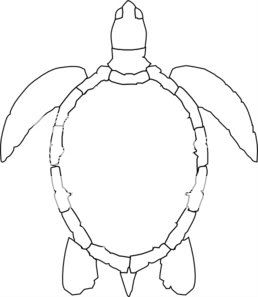
Turtles are fun animals to feature for a theme day in a preschool curriculum and could be included into a variety of preschool lesson plans, such as a pet theme, or a reptile lesson plan. The following article provides some facts, preschool songs, crafts and books for a turtle theme day within an early childhood setting.
Introducing Turtles with Children
Begin a theme on turtles at circle time by asking the children what they know about turtles. Record their answers and use them as a starting base for the learning process. Some facts to share with a preschool classroom about turtles:
•one of the oldest living animals on earth, they existed over 200 million years ago
•some turtles can live for a very long time, to 100 years old and older
•many different sizes and live everywhere on earth except the Antarctica where it is too cold
•live in many different settings from land and water, to forests and grasslands
•many land turtles are called tortoises.
•they are reptiles
•their shell protects them from predators
•there are over 250 species
•some are endangered and need protecting
•some turtles can be kept as pets, and they need to be taken care of properly
•they can be carnivores, herbivores, and omnivores depending on what kind of turtle
Preschool Song and Poem about Turtles
Begin a theme on turtles at circle time by asking the children what they know about turtles. Record their answers and use them as a starting base for the learning process. Some facts to share with a preschool classroom about turtles:
•one of the oldest living animals on earth, they existed over 200 million years ago
•some turtles can live for a very long time, to 100 years old and older
•many different sizes and live everywhere on earth except the Antarctica where it is too cold
•live in many different settings from land and water, to forests and grasslands
•many land turtles are called tortoises.
•they are reptiles
•their shell protects them from predators
•there are over 250 species
•some are endangered and need protecting
•some turtles can be kept as pets, and they need to be taken care of properly
•they can be carnivores, herbivores, and omnivores depending on what kind of turtle
Preschool Song and Poem about Turtles
This action song has fun hand motions to go along with the lyrics and is very popular within many early childhood environments, including swimming lessons. If you do not know the tune, there are many YouTube videos available:
I have a little turtle, his name is Tiny Tim
I put him in the bathtub to see if he could swim.
He drank up all the water, he ate up all the soap
And now my little turtle has a bubble in his throat.
Works well with using sign language as well. Here are the signs for turtle and bubble
This finger play is a popular preschool poem about turtles:
There was a little turtle (make a small circle with your hands)
He lived in a box, (make a box with both hands)
He swam in a puddle, (wiggle hands)
He climbed on the rocks. (climb fingers of one hand up over the other)
He snapped at a mosquito, (clap hands)
He snapped at a flea, (clap hands)
He snapped at a minnow, (clap hands)
He snapped at me. (point to yourself)
He caught the mosquito, (mimic catching a bug)
He caught the flea (same action)
He caught the minnow, (same action)
But he didn't catch me! (point to yourself)
Turtle Preschool Craft
A developmentally appropriate craft for preschool is to use a paper plate for the turtle's body. The preschoolers can then tear up paper to cover the shell. This process is great for fine motor development. Prepare a head, tail and feet for the children to finish their turtle.
A single egg carton can be used for the turtle's body. In addition to make a flat turtle, the young children can put together the turtle with as an old CD covered in felt or craft foam cut in a circle for the main body.

Felt Board Poem about Turtles

The following poem works well as felt pieces on a flannel board:
One turtle with nothing to do
Called for his friend, then there were two.
Two turtles strolling by a tree
Saw their buddy, now there are three.
Three turtles, a log as their floor
Made room for a pal, now there are four.
Four turtles warming in the sun
Saw a fifth friend, and said, "what fun!"
Children's Books about Turtles
Many preschool children are familiar with turtles based on the many books, and television shows about Franklin and his friends. Here are a few more suggested books:
•One Tiny Turtle by Nicola Davies (Candlewick, 2005)
•Turtle in the Sea by Jim Arnosky (GP Putnam and Sons, 2002)
•Turtle Splash by Cathryn Falwell (Greenwillow, 2002)
Of course, don't forget about the classic tale of Tortoise and the Hare.
Other Preschool Areas for a Turtle Theme
There are still some more ways to add turtles into a theme day within a preschool curriculum, such as placing plastic turtles into a sensory table with sand and barks of wood, taking a field trip to a local pet store that have turtles and playing a game of Turtle Turtle Hare, a rendition of the classic Duck, Duck Goose. Children could wear green or brown on this theme day and be invited to bring any turtles they have at their home.










